
Pseudomonas is a genus of Gram-negative bacteria belonging to the family Pseudomonadaceae in the class Gammaproteobacteria. The 313 members of the genus demonstrate a great deal of metabolic diversity and consequently are able to colonize a wide range of niches. Their ease of culture in vitro and availability of an increasing number of Pseudomonas strain genome sequences has made the genus an excellent focus for scientific research; the best studied species include P. aeruginosa in its role as an opportunistic human pathogen, the plant pathogen P. syringae, the soil bacterium P. putida, and the plant growth-promoting P. fluorescens, P. lini, P. migulae, and P. graminis.

Micromonospora is a genus of bacteria of the family Micromonosporaceae. The genus name was first proposed in 1923 by Danish physician Jeppe Ørskov in an attempt to classify what at the time was considered "ray fungi" based on morphology. Members of this genus are found throughout natural soil and sediment environments, as well as in association with roots of plants of various species. The genus is well known for its ability to produce a variety of medically relevant products.
Acetobacteraceae is a family of Gram-negative bacteria, belonging to the order Rhodospirillales, class Alphaproteobacteria. Two distinct clades are recognized: the acetic acid bacteria and a more heterogeneous group including acidophilic and phototrophic bacteria. The type genus is Acetobacter. Ten genera from Acetobacteraceae make up the acetic acid bacteria.

The Rhizobiaceae is a family of Pseudomonadota comprising multiple subgroups that enhance and hinder plant development. Some bacteria found in the family are used for plant nutrition and collectively make up the rhizobia. Other bacteria such as Agrobacterium tumefaciens and Rhizobium rhizogenes severely alter the development of plants in their ability to induce crown galls or hairy roots, respectively. The family has been of an interest to scientists for centuries in their ability to associate with plants and modify plant development. The Rhizobiaceae are, like all Pseudomonadota, Gram-negative. They are aerobic, and the cells are usually rod-shaped. Many species of the Rhizobiaceae are diazotrophs which are able to fix nitrogen and are symbiotic with plant roots.
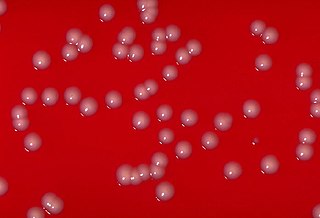
Corynebacterium is a genus of Gram-positive bacteria and most are aerobic. They are bacilli (rod-shaped), and in some phases of life they are, more specifically, club-shaped, which inspired the genus name.

The Hyphomicrobiales are an order of Gram-negative Alphaproteobacteria.
The family Micrococcaceae includes bacterial genera of Gram positive cocci that inhabit the air and skin, such as Micrococcus luteus.
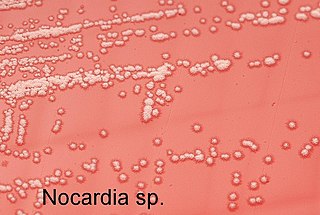
Nocardia is a genus of weakly staining Gram-positive, catalase-positive, rod-shaped bacteria. It forms partially acid-fast beaded branching filaments. It contains a total of 85 species. Some species are nonpathogenic, while others are responsible for nocardiosis. Nocardia species are found worldwide in soil rich in organic matter. In addition, they are oral microflora found in healthy human gingiva, as well as periodontal pockets. Most Nocardia infections are acquired by inhalation of the bacteria or through traumatic introduction through openings in epithelial barriers.

Jungermanniopsida is the largest of three classes within the division Marchantiophyta (liverworts).
Pacullidae is a family of araneomorph spiders first described by Eugène Simon in 1894. It was merged into Tetrablemmidae in 1958, then raised back to family status after a large phylogenetic study in 2017.
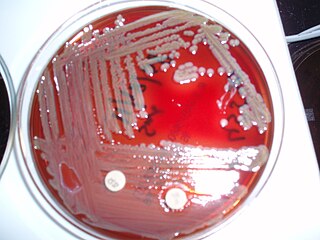
The family Flavobacteriaceae is composed of environmental bacteria. Most species are aerobic, while some are microaerobic to anaerobic; for example Capnocytophaga and Coenonia.

Methylobacterium is a genus of Hyphomicrobiales.

Microbacteriaceae is a family of bacteria of the order Actinomycetales. They are Gram-positive soil organisms.
The Actinomycetaceae are a family of bacteria in the order Actinomycetales that contains the medically important genus Actinomyces. These organisms are closely related to the mycobacteria, but were originally classified as fungi because they were thought to be transitional forms between bacteria and fungi.

The Pseudonocardiaceae are a family of bacteria in the order Actinomycetales and the only member of the suborder Pseudonocardineae.
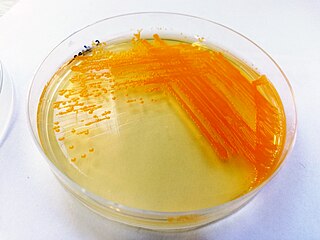
Chryseobacterium is a genus of Gram-negative bacteria. Chryseobacterium species are chemoorganotrophic, rod shape gram-negative bacteria. Chryseobacterium form typical yellow-orange color colonies due to flexirubin-type pigment. The genus contains more than 100 described species from diverse habitats, including freshwater sources, soil, marine fish, and human hosts.
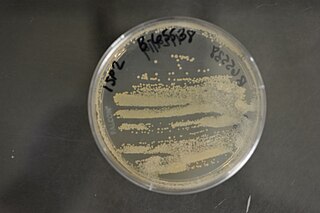
The genus Actinomadura is one of four genera of Actinomycetota that belong to the family Thermomonosporaceae. It contains aerobic, Gram-positive, non-acid-fast, non-motile, chemo-organotrophic actinomycetes that produce well-developed, non-fragmenting vegetative mycelia and aerial hyphae that differentiate into surface-ornamented spore chains. These chains are of various lengths and can be straight, hooked or spiral. The genus currently comprises over 70 species with validly published names with standing in nomenclature, although the species status of some strains remains uncertain, and further comparative studies are needed.
Runella is a Gram-negative, aerobic and non-motile bacterial genus from the family Spirosomaceae.
Chitinophagaceae is an aerobic or facultatively anaerobic and rod-shaped family of bacteria in the phylum Bacteroidota.











